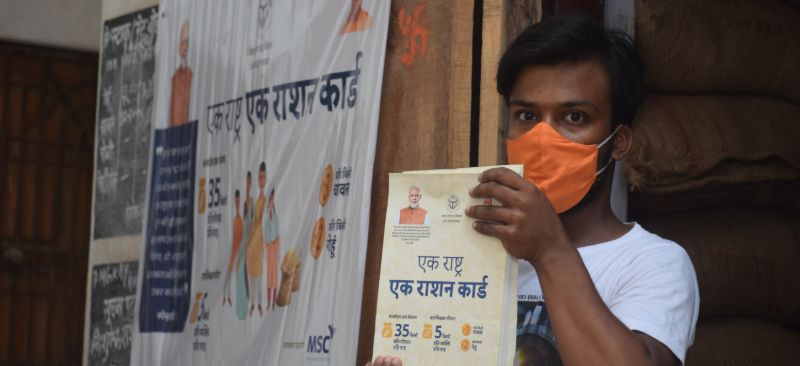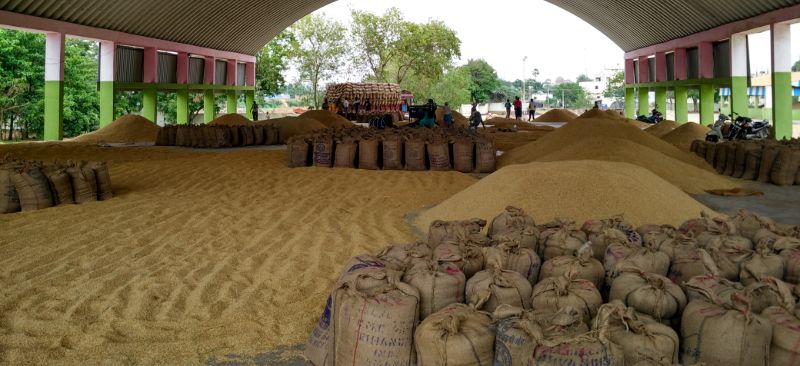
The Government of India, through NITI Aayog, has launched a project to transform the Sevapuri block (sub-district administrative division) in Varanasi district, Uttar Pradesh, into a model block for the country. The project is significantly improving outcomes of various welfare programs in 87 villages, with a population of 234,000, through coordination and convergence. In this project, the central and state governments work together to improve key development outcomes.
MSC’s role is to develop a strategic plan for health and nutrition and converge the efforts of all development agencies working in Sevapuri. We collaborate with partners, such as JHPIEGO, India Health Action Trust (IHAT), and Project Concern International (PCI). We identified KPIs and defined a process to monitor and evaluate progress in several areas. So far, we have looked at immunization of children, screening for non-communicable diseases, the success rate of tuberculosis (TB) treatment among notified TB patients, and supplementary nutrition for women under the ICDS program, among others.

The Government of India has been conducting pilots on alternate delivery mechanisms, including direct cash transfers. These pilots are expected to cut leakages, increase efficiency, and enable better targeting under the food security programs. MSC undertook a multidimensional assessment in 2019 to explore the impact of cash transfer on nutritional and health outcomes in the target populations.
About 245,000 households across three union territories in India have been receiving cash transfer benefits since 2015. The study revealed that the beneficiaries find the subsidy amount insufficient as rations purchased with the subsidy lasted for only two weeks. In contrast, the rations under the prior in-kind distribution system lasted three weeks. Moreover, the cash transfers had a negligible effect on the dietary diversity and quantity of food consumed due to a lack of nutritional literacy. The study also found that, typically, beneficiaries spent the cash subsidy on non-food expenses. The study was instrumental in identifying levers that can improve the design of cash transfer programs to improve nutritional outcomes across vulnerable communities.

The primary objective of Indonesia’s PKH program is to reduce the burden of expenditure on low-income families and change their behavior toward accessing health, education, and other social welfare services. Our study evaluated the impact of PKH on the critical welfare, health, and education indicators. It provided recommendations to enhance the achievements of the program. The key health component of the program covers pregnant women, post-delivery care, babies up to the age of 11 months, and children aged between 1 – 6 years.
The study revealed that PKH continues to positively impact the health and welfare indicators for the beneficiary households. However, the impact on outcomes can improve through compliance monitoring, especially for indicators like the ante- and post-natal care (ANC and PNC) visits for mothers and babies and children’s developmental monitoring.

The Government of India spends about USD 40 billion annually on social safety net programs to provide food and nutritional security for 70% of its population. Yet, health and nutrition outcomes remain sub-par. Malnutrition is a significant contributor to the disease burden in India. A 2019 study by MSC assessed the dietary intake and nutritional gaps among social safety net beneficiaries. It revealed that beneficiaries lack dietary diversity, eat food deficient in macro and micronutrients, and have low nutrition literacy. The study explored solutions that help policymakers build a more nutrition secure food system across India.

The objective of the Digital Financial Inclusion in India (DFII) project was to address some of the major barriers to the enhancement of digital financial inclusion in India. These included not only regulatory barriers but other constraints, such as the lack of commercial incentives and on-the-ground technical expertise. The project was designed with the following three key objectives in mind:
- Enhance access to digitized G2P payments;
- Provide technical support to banks, ANMs, and MNOs;
- Policy advocacy to increase awareness among government officials, banks, CICO network managers, and other key stakeholders in India. The awareness drive focused on the core elements needed to overcome the barriers in CICO management, customer activation, and product development to enable digital financial inclusion.
In line with the delivery requirements of DFII, MSC conducted a study to assess the effectiveness of its financial literacy program. To assess the program, we used the extensive network of SHGs developed by the Jharkhand State Livelihood Promotion Society (JSLPS).
MSC designed a customized pilot program that meets the requirements of the target population. This program was piloted in three blocks of Jharkhand.
The pilot has directly touched the lives of around 6,000 households in around 60 villages and improved their awareness and knowledge regarding basic financial services. Based on the success of the pilot, JSLPS has expanded the program to other intervention blocks which was expected to affect 2.75 lakh households under the SHG net of JSLPS.

Energy4Impact, a UK-based NGO, sought to reduce poverty in East Africa through accelerated access to energy. It provides technical, commercial, and financial advice to MSMEs in the clean and reliable energy solutions sector. Energy4Impact runs programs to enable MSMEs to access debt markets and offers credit guarantees to lenders. In 2016, E4I understood that the operational aspects of its flagship programs, Capital Access for Renewable Energy Enterprises (CARE2) and Developing Energy Enterprises Programme (DEEP) merited a revision in approach to generate greater interest from institutional lenders.
In 2016, Energy4Impact contracted MSC to conduct a consultative review of the Capital Access for Renewable Energy Enterprises (CARE2) project and Developing Energy Enterprises Project (DEEP). MSC reviewed the framework, underlying assumptions, operational guidelines, impact parameters, and implementation progress. It examined the success criteria of the programs critically. Based on the assessment, MSC advised E4I to rework the cash flow and return parameters of the investee companies and highlight them in the DPRs. This would enable E4I to generate greater interest from institutional lenders to fund MSMEs enrolled under these two programs.





